Newport, Rhode Island is perhaps best known as the summer escape for the barons of the late 19th/early 20th century. The 'summer cottages' that they built are marvels of architecture and monuments to the excess of the wealthy families who built them for use only 8-12 weeks a year. I first visited Newport as a teenager; I remember being in awe of the mansions when I saw them for the first time over 20 years ago. Ten years after my first visit, when in my mid-twenties, I visited Newport again while my husband was attending graduate school in Boston. It was a tradition for the students to celebrate the end of the year at the 'Newport Ball', held in one of the mansions of Newport. I seem to recall that the students of my husband's class year were so raucous that they were banned from renting a mansion in Newport the following year. I don't have many fond memories of my visit to Newport on that trip!
I revisited Newport last week, 13 years after my last trip, and had an amazing time despite the fact that the weather was rainy and cold. I now have such an appreciation for the beauty of the town and its architecture. Although I loved seeing the mansions and taking a walk along the Cliff Walk (a walking trail that skirts the coast and goes right by many of the beautiful mansions), I actually found the humble houses of the Colonial craftsman in the town to be just as interesting. Newport has dozens of houses from the 1700s and 1800s that are intact, thanks in large part to the Preservation Society of Newport and the Newport Restoration Foundation (NRF), established by heiress Doris Duke. Through the combined efforts of these two organizations, the architectural and social history of Newport from Colonial Times through the Gilded Age has been meticulously preserved.
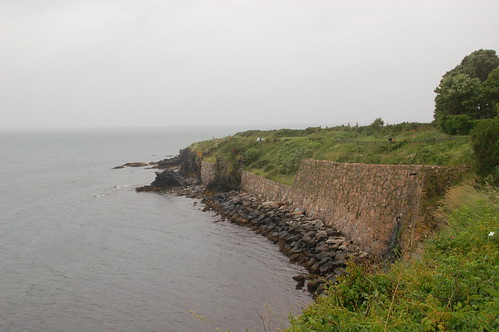
The Cliff Walk skirts along the eastern shore of Newport.

The entire walk is open to the public, yet cuts across the back yards of many of the mansions on the prime waterfront property. Many of the borders of the individual properties are flanked with large gates, which are open all day.

A view of a property on that is perched at the edge of the shore. The weather was quite moody as you can see.
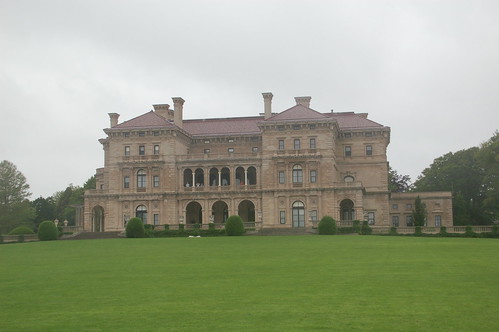
One of the mansions that can be seen on the walk - this one is the Breakers, perhaps the most famous of the Newport mansions. The Breakers was built by the Vanderbilt family, and is over 138,000 square feet - the largest home in New England. Rumor has it that the Vanderbilt family still uses the entire upper level of the Breakers.

This is Carey Mansion, part of Salve Regina University, also along the Cliff Walk. I love the turret in the center of the mansion.

Another one of the Newport Mansions, called 'The Elms'; this one is not waterfront. Unfortunately, no photography was allowed inside any of the mansions, but as you can imagine the interiors were fascinating. I thought that some of the bathrooms in the Elms were particularly interesting - two of them were done in white subway tile, and small hexagon tile on the floor. I have seen this in quite a few bathrooms renovated or built over the past few years; I guess it is a truly classic look! The Elms is the second largest home in Newport, and is just over 60,000 square feet.
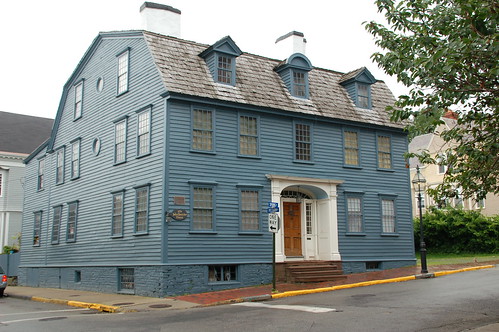
The more humble buildings were found in the town center of Newport. Notice the dormers on this house; the middle dormer is a different shape. This is a historical property, although not one owned by the Newport Restoration Foundation.

In the late 1960s the NRF, under the guidance of Duke, set about buying and preserving buildings and homes from the 18th and 19th centuries. This was necessary as Newport was undergoing an urban renewal that threatened the older buildings; many older buildings were razed in order to build America's Cup Avenue, which brought an urgency to the formation of the NRF.
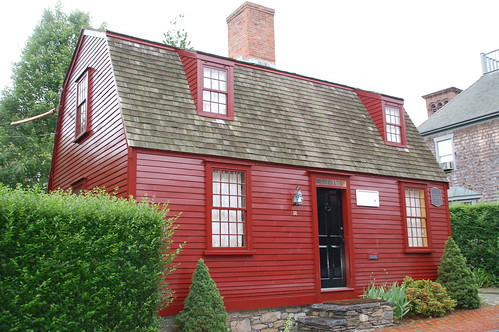
What is striking about this preservation effort was that many, if not most of these homes did not have the grandeur of the large historical properties; many of them were dilapidated and the humble abodes of the craftsmen and average townsmen built in the 1700s and 1800s.

The NRF preserved and restored these homes (71 in total), and in an interesting twist, rents many of these homes to 'tenant-stewards' so that the homes will continue to have a life instead of becoming sterile museums. The tenant-stewards are under strict order to maintain the homes as-is; the homes have been modernized with plumbing and electricity, but no additional changes can be made without permission from the NRF. The waiting list to rent a historical home owned by the NRF can be very long, and it often takes years to get to the top of the list!
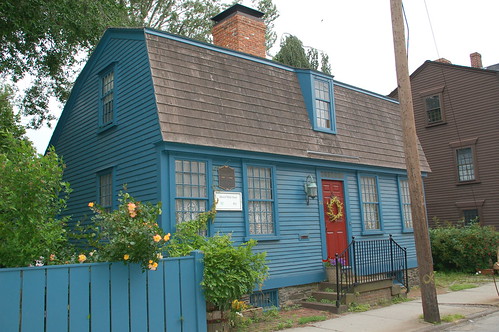
The homes owned by the NRF have a white plaque with the name of the house and the date it was constructed. Interestingly, many of the homes have been moved from where they were originally built and moved to streets where they will not be disturbed. All painting on the exterior and in the interior must adhere to a strict color palette, inspired by the color palette from Colonial Williamsburg. The pictures above show the big variety in the color palette used by the original builders of these charming homes.
Largely because of the efforts of the Newport Restoration Foundation and the Preservation Society of Newport, the town of Newport maintains a charming feel of the past without any of the feel of a theme park. I highly recommend it as a destination for any of my readers with an interest in history and architecture! In my next post, I will reveal my favorite house from Newport - I saw it when I was on the trolley tour. It is not one of the famous mansions, but is instead a privately owned home with beautiful architectural details. Stay tuned!

